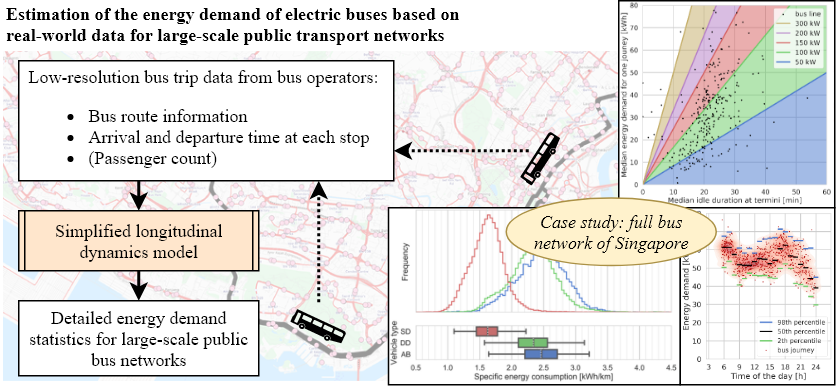Estimation of the energy demand of electric buses based on real-world data for large-scale public transport networks
Abstract
An increasing number of cities are transitioning from fossil fuel-powered buses for public transport to battery electric buses. Evaluating the energy demand of buses has become an important prerequisite for the planning and deployment of large electric bus fleets and the required charging infrastructure. A number of state-of-the-art approaches to determining the energy requirements of electric buses use individual specific energy demand values or rely on standard driving cycles, though these do not consider local bus route characteristics. Others require high-resolution measurements of the vehicles’ driving profiles, which is impractical for large bus fleets. This paper presents a longitudinal dynamics model to calculate the energy demand for electric buses. The model is designed to be easily applied to large bus networks using real data sources that are commonly available to bus transit operators. This data can be derived from low-resolution data collected from day-to-day operations, where only the arrival and departure time of the buses at each bus stop are available. This approach offers a practical alternative to state-of-the-art methods and requires no high-resolution velocity profiles, which are difficult to obtain, while still taking into account the details of the operational characteristics of the transportation network under consideration. The application of the model is demonstrated in a case study to electrify the complete public bus network in Singapore. The results showed that the heterogeneity of driving conditions observed in a large network leads to a high variance in energy requirements between different bus lines and at different times of day. This confirms the need to take the characteristics of each individual bus route into account. In the case-study, a fully electric public bus fleet would require about 1.4 GWh per day for revenue service, which is about one per cent of Singapore’s daily electricity demand. Another finding is that 50% of the bus lines require less than 40 kWh per terminus-to-terminus journey, which indicates a good potential for fast opportunity charging during layover time. The results of the model should serve as the basis for further studies into battery sizes, charging strategies and charging infrastructure requirements.
Graphical Abstract
